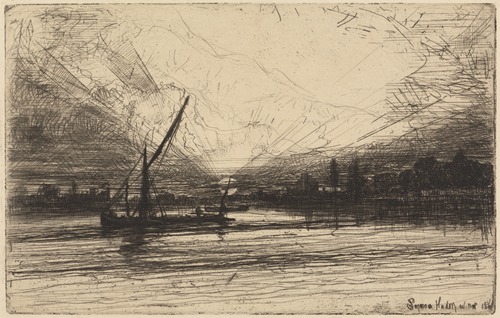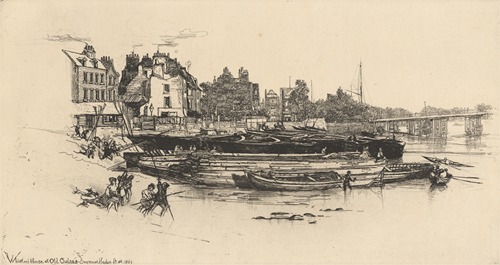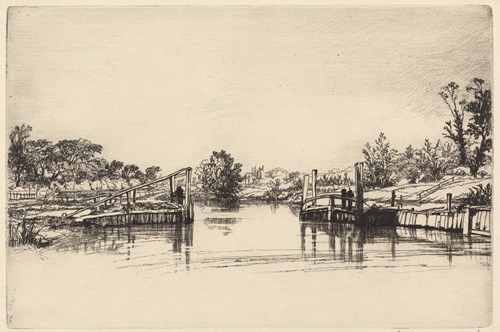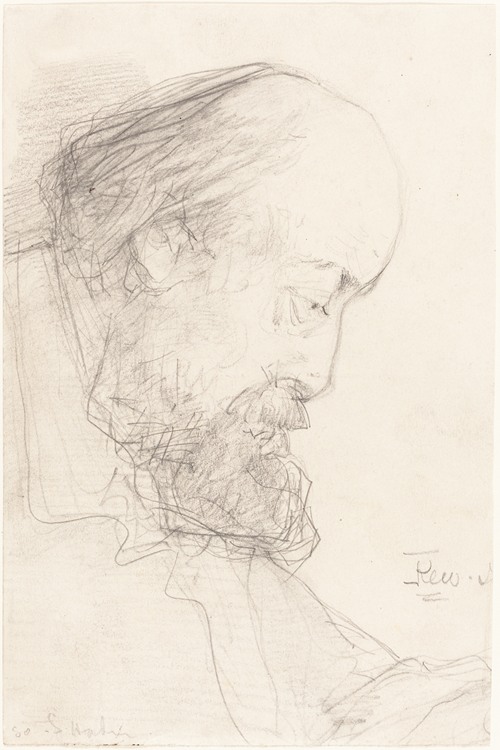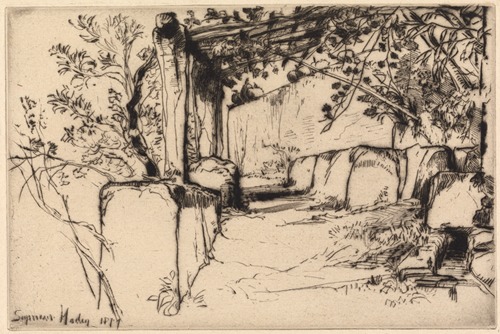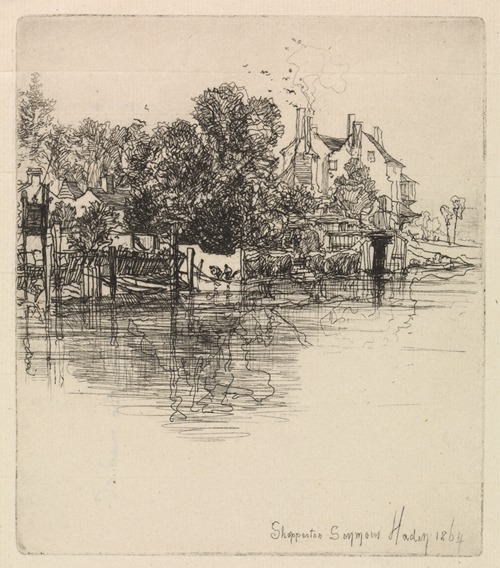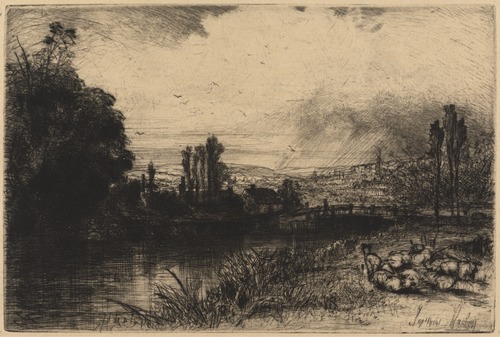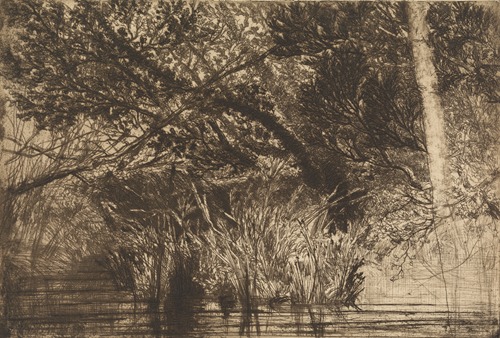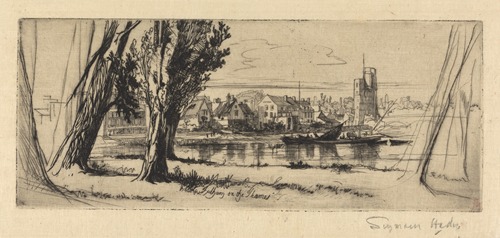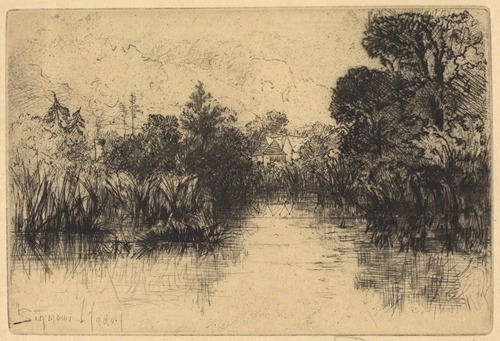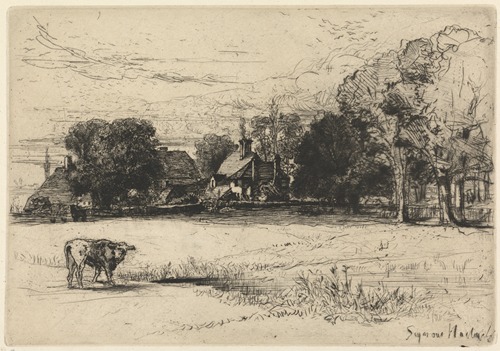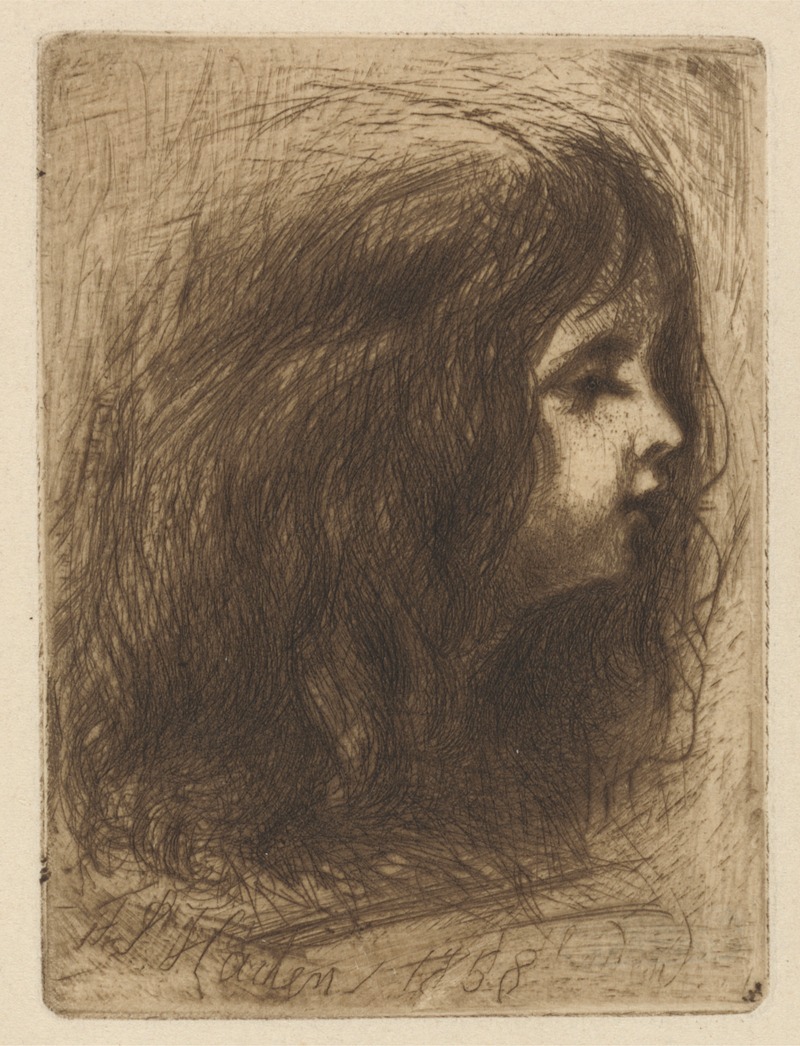
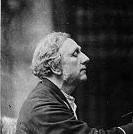
Sir Francis Seymour Haden CMG FRCS PPRE, was an English surgeon, best known as an original etcher who championed original printmaking. He was at the heart of the Etching Revival in Britain, and one of the founders of the Society of Painter-Etchers, now the Royal Society of Painter-Printmakers, as its first president. He was also a collector and scholar of Rembrandt's prints.
Haden was born at 62 Lower Sloane Street, Chelsea, London. His father, Charles Thomas Haden, being a well-known doctor and lover of music. He was educated at Derby School, Christ's Hospital, and University College, London, and also studied at the Sorbonne, Paris, where he took his degree in 1840. He was admitted as a member of the College of Surgeons in London in 1842.
In 1843–44, with his friends Duval, Le Cannes and Colonel Guibout, he travelled to Italy and made his first sketches and six etchings from nature. Haden attended no art school and had no art teachers, but between 1845 and 1848 he studied intently, the portfolios of prints belonging to a second-hand dealer named Love, who had a shop in Bunhill Row, the old Quaker quarter of London. Arranging the prints in chronological order, he studied in particular, the works of the great original engravers, Albrecht Dürer, Lucas van Leyden and Rembrandt.
As mentioned in "Print REbels" primarily celebrating the bicentenary of Haden: Exquisite line, especially drypoint burr, sometimes calligraphic in sensibility, can be seen across Haden's prints, the majority which are landscapes. Added to this is his range and intensity of expression. He expresses the maximum by means of the minimum to achieve the essence of his subject matter: what Haden himself called "the labour of omission". Haden's printmaking was mutually invigorated by his younger brother-in-law, James McNeill Whistler, at the Haden home in Lower Sloane Street in 1855. An etching press was installed there and for a while Haden and Whistler collaborated on a series of etchings of the Thames. However, the relationship and project did not last.
Haden followed the art of original etching with such vigour that he became not only the foremost British exponent of that art from 1865 but brought about its revival in England. His strenuous efforts and perseverance, aided by the secretarial ability of Sir William R Drake RE, resulted in the foundation of the Royal Society of Painter-Etchers and Engravers, styled the Royal Society of Painter-Printmakers since 1990. As President Haden ruled the Society for thirty years with a strong hand from its first beginnings in 1880. "As PRE," Frederick Keppel, author and print collector wrote: "Sir Francis Seymour Haden did great work in maintaining sound doctrine in etching. Nothing was admitted that was "commercial" in character, and etchings that were done after paintings by other hands were vigorously ruled out." In fact, as regarding the RE Members, "he ruled them with a rod of iron," However, "membership was eagerly sought for – so much that many famous et hers weren't never elected though they thrived hard to be."
Notwithstanding Haden's study of the old masters of his art, Haden's own plates were very individual. He preferred to work directly onto the plate in front of the subject. Malcolm Salaman Hon RE wrote of Haden drawing from nature; "with that breadth, freedom, and spontaneity of effect, which, while suggesting a sketch, represented a true etcher's drawing". Even when working from a picture by another artist his personality dominates the plate, as for example in the large plate he etched after J.M.W. Turner's Calais Pier, which is a classical example of what interpretative work can do in black and white. Of his original plates, 263 in number, one of the most notable was the large Breaking up of the Agamemnon.
An early plate, rare and most beautiful, is Thames Fisherman. Mytton Hall is broad in treatment, and a fine rendering of a shady avenue of yew trees leading to an old manor-house (now a hotel in Lancashire) in September sunlight. Sub Tegmine was etched in Greenwich Park in 1859; and Early Morning—Richmond", full of the poetry and freshness of the hour, was done, according to Haden, actually at sunrise.
Also mentioned in Print REbels: ‘Haden’s finest and rarest compositions were created along the River Muteen, by Greenpark in Dundrum, County Tipperary and at Glenmalure, County Wicklow. This surgeon-etcher visited Ireland four times between 1859 and 1864. Impressions of A River in Ireland, A Bye Road in Tipperary and Sunset in Ireland are hailed internationally amongst the finest landscape etchings of the 19th century.
Other notable plates include are Combe Bottom, Shere Mill Pond (both the small study and the larger plate), The Towing Path, Kilgaren Castle, The Three Sisters, Battersea Reach – Out of Whistler's Window, Penton Hook, Grim Spain and Evening Fishing, Longparish'. ‘Sunset in Ireland’ is Haden's acknowledged pastoral masterpiece. A catalogue of his works was begun by Sir William Drake and completed by Harrington in 1880. During later years also Haden began to practise mezzotint engraving, with a measure of the same success that he had already achieved in pure etching and in drypoint. His mezzotints include An Early Riser, a stag seen through the morning mists, Grayling Fishing and A Salmon Pool on the Spey. He also created paintings and charcoal drawings of trees and park-like country.
